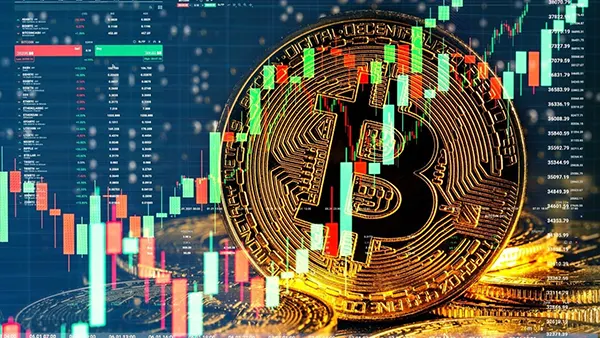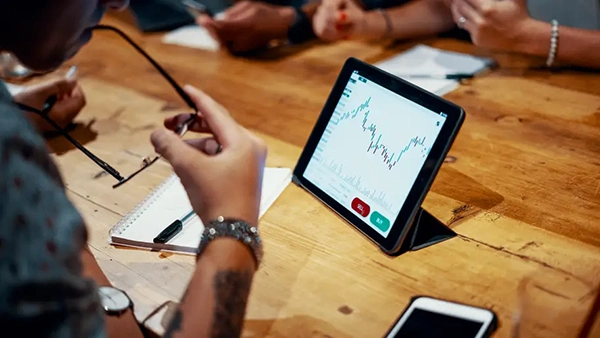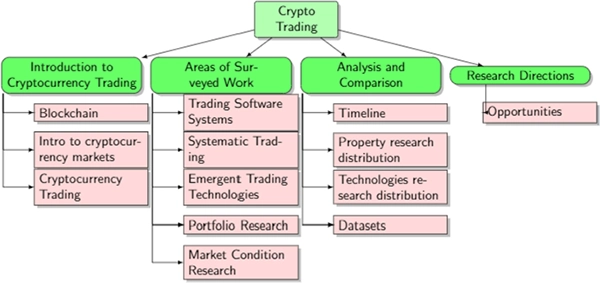
Do you know that Forbes’ cryptocurrency statistic report predicts that the number of active users in the cryptocurrency market will surpass 107.30 million?
The above growth rate is associated with a user penetration rate of 7.41% in 2024, which is expected to rise to 7.35% by the end of 2025.
This statistical representation shows that more and more people are getting involved in it. So, are you also interested in investing in cryptocurrencies? If yes, then this article is definitely for you.
Whether you are an expert or a beginner who has no prior experience, looking for guidance to start the trading journey, this write-up offers comprehensive details for everyone.
Let’s begin the journey by reading this article!
KEY TAKEAWAYS
- Before trading, enlighten yourself about cryptocurrency, its functioning, and the changes in its landscape.
- Select a reliable, secure, and user-friendly platform that offers multifactor authentication for safety.
- First, learn about the different cryptocurrencies, understand their purpose, as well as their potential.
- Start with a small investment that one might feel comfortable putting at risk.
- Be familiar with fundamental trading tools.
- Crypto trading can face ups and downs, so focus on consistent learning and accept the losses.
- Use strong passwords and consider a hardware wallet for larger holdings to prioritize security.
- Regularly review the trades to spot the down factor, and then refine the strategy.
- Continuously learn from reputable sources as the digital currency market changes fast.

First things first, before starting the journey in trading, one should know what Crypto actually
means. In simple terms, it involves buying and selling cryptocurrencies to earn a profit.
It is kind of similar to stock, but where you have to deal with digital assets like Bitcoin or
Ethereum instead of company shares. The value of these digital currencies can fluctuate a lot,
which eventually creates changes to profit and loss.
At the end, you’ll be able to invest and earn profitable returns as you continue to acquire
knowledge about cryptocurrencies. Now, it is a high time to earn crypto online.
Choosing a reliable Cryptocurrency exchange starts here! A cryptocurrency exchange is done on a website where you can purchase, sell, and exchange currencies. It may work like a stockbroker, but for digital assets. When you choose an exchange, look for one that has the following qualities:
Some well-known options are Coinbase, Binance, and Kraken. But you should check that it offers cryptocurrency if you want to trade and has features such as two-step authentication to keep the account secure.
Once you start learning about cryptocurrency assets, there is no finishing line. Since there are numerous cryptocurrencies out there, not all of them are created equal. Bitcoin might be the most famous, but there are many other options too; each has its own unique purpose and technology.
Therefore, you must take some time to research different cryptocurrencies before you invest. Understanding what to do, who created them, and what problems they aim to solve will help you make more informed decisions. You can also use SPELL for future predictions.


Are you also thinking that you need a huge amount of capital to invest in cryptocurrency? Hold on, you don’t need to break the bank to invest in cryptocurrency. In fact, it is mostly recommended to start with a small amount of money that you are comfortable risking.
The Crypto market can be volatile, and you may learn a lot more by actually participating with real money, than just by reading about it. Overall, a smaller investment brings smaller risk, so it is better to start bit by bit.
Don’t fear complicated charts and graphs. As a beginner, you would probably be using basic tools available on your chosen exchange.
This procedure includes two major tools:
Although there are other tools in the market as well, understanding this fundamental tool is essential for executing the basic trade.
In reality, any digital currency trading is not a fast track to quickly becoming rich. There will be thicks and thins, and it is vital to set realistic expectations.
In short, you won’t become a millionaire overnight, and losses are a part of this learning process. What do you really need to do? Focus on consistent learning and gradual growth rather than hoping for instant growth.
TODAY’S TRIVIA
Bitcoin is honored as the first cryptocurrency, which was initially launched as an open-source software in 2009. While June 2023 accounted for more than 25,000 other cryptocurrencies in the marketplace.

After you receive cryptocurrency, keeping your assets secure is paramount. Think of digital assets as precious items that need protection. Start by creating strong, unique passwords for every platform you use. Even more important is to turn on two-factor authentication (2FA) for all your accounts to add a safety layer.
In case you wish to store it for a long time, it’s a clever move to buy a hardware wallet. These physical devices keep the cryptocurrency offline, which makes them much safer from online threats. Always be on the lookout for phishing attempts or weird messages; make sure to check the source before you click links or share any info.
Tracking and evaluating performance is the key to effective results. Just making trades isn’t enough; you need to understand what happens with them to get better at it. Along with a basic performance check, you should go deeper into your trading history.
Take a look at each trade:
Using a tool to track the portfolio or even a detailed spreadsheet can help you record the trades, see gains and losses, and spot patterns. This will help you make smarter choices and improve your overall approach.
Now you need to move a step ahead from just knowing the basics. Because the market is dynamic, with rapid changes occurring frequently. As a result, staying well-informed and updated is absolutely necessary to navigate this changing landscape effectively.
Follow these things to maintain an edge:
Proactive learning helps you predict changes, allowing you to make more informed and strategic trading decisions.
Initially, trading might appear complex to you, but breaking it down into small steps can make it much easier. In this section, the table below highlights the key steps and important points addressed to offer a clear road map.
| Step | Explanation |
| Understand the Basics | Understand the fundamentals of trading and how it works. |
| Choose an Exchange | Select a trustworthy, secure, and user-friendly platform. |
| Research Assets | Learn about different cryptocurrencies by checking out their details. |
| Use Basic Tools | Be conscious of the market and limit orders. |
| Set Realistic Expectations | Understand that trading involves risk and is not a quick gateway to becoming rich. |
| Secure Your Assets | Use strong passwords, 2FA, and set up hardware wallets. |
| Track Performance | Regularly review your trades to learn and improve. |
| Stay Informed | Keep up-to-date with digital coin news and trends. |
In the end, a Crypto trading journey can be full of hurdles if you don’t have prior experience. However, taking one step at a time can help you build a solid foundation.
Just make sure to be aware of the basics, start small, prioritize security, and always be prepared for the ups and downs of the market. Beyond that, the world of crypto is full of opportunities, and with the right approach, you can navigate it successfully.
No, you can start with a very small investment.
Not necessarily, because this involves risks, including volatility and potential hacks.
Learning crypto trading is an ongoing process; you can learn the basics quickly, but being proficient takes time.
A crypto exchange is done on a platform where you buy and sell cryptocurrencies, while a crypto wallet is where you store your cryptocurrencies.
